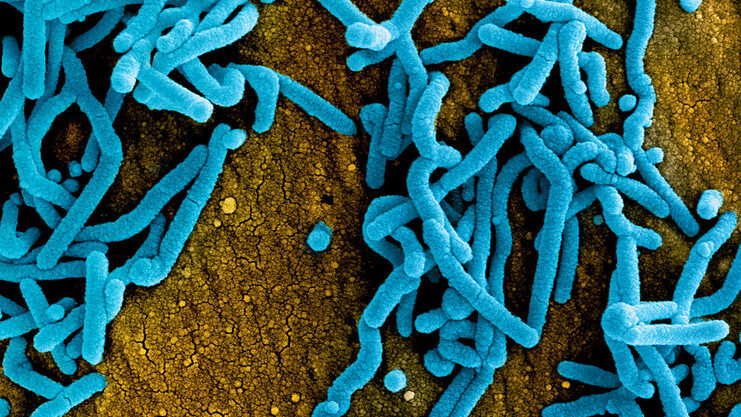
Guinea’s health authority announced the first detection of the Marburg virus in the country, which is also the first case in West Africa.
Marburg, a haemorrhagic fever-causing virus related to Ebola, killed more than 200 people in Angola in 2005, the deadliest recorded outbreak. Laboratory tests of samples taken from a now-deceased patient turned out positive for the Marburg virus.
The patient had sought treatment at a local clinic in the southern prefecture of Gueckedou, and a medical team had been sent to investigate the case. Cases of the 2021 Ebola outbreak in Guinea occurred in Gueckedou, as well as the 2014–2016 West Africa outbreak were initially detected.
“We applaud the alertness and the quick investigative action by Guinea’s health workers. The potential for the Marburg virus to spread far and wide means we need to stop it in its tracks,” said Dr Matshidiso Moeti, World Health Organization (WHO) Regional Director for Africa. “We are working with the health authorities to implement a swift response that builds on Guinea’s past experience and expertise in managing Ebola, which is transmitted in a similar way.”
Contact tracing efforts are underway, and health authorities are launching education and awareness programmes on the disease.
Four high-risk contacts, including a healthcare worker, have been identified, as well as 146 others who could be at risk, according to expert Dr Krutika Kuppalli, who spoke to the BBC. A team of WHO experts is on the ground helping to investigate the case and aiding the national health authority’s emergency response.
Cross-border surveillance is also being enhanced to quickly detect any cases, with neighbouring countries on alert. The Ebola control systems in place in Guinea and in neighbouring countries are proving crucial to the emergency response to the Marburg virus.
Marburg is transmitted to people from fruit bats and spreads among humans through direct contact of body fluids.
Illness begins abruptly, with high fever, severe headache and malaise. Within seven days, severe haemorrhagic signs appear in many patients. Case fatality rates are high, ranging from 24% to 88% in past outbreaks depending on virus strain and case management.
With no direct treatments for the virus, supportive care, including rehydration with oral or intravenous fluids, and treatment of specific symptoms, improves survival. There are evaluations underway for potential treatments, including blood products, immune therapies and drug therapies.
One experimental antiviral compound being tested works by preventing viral particles from ‘budding off’ of infected cells.
Source: WHO



One Reply to “Marburg Virus Detected in Guinea”
Comments are closed.